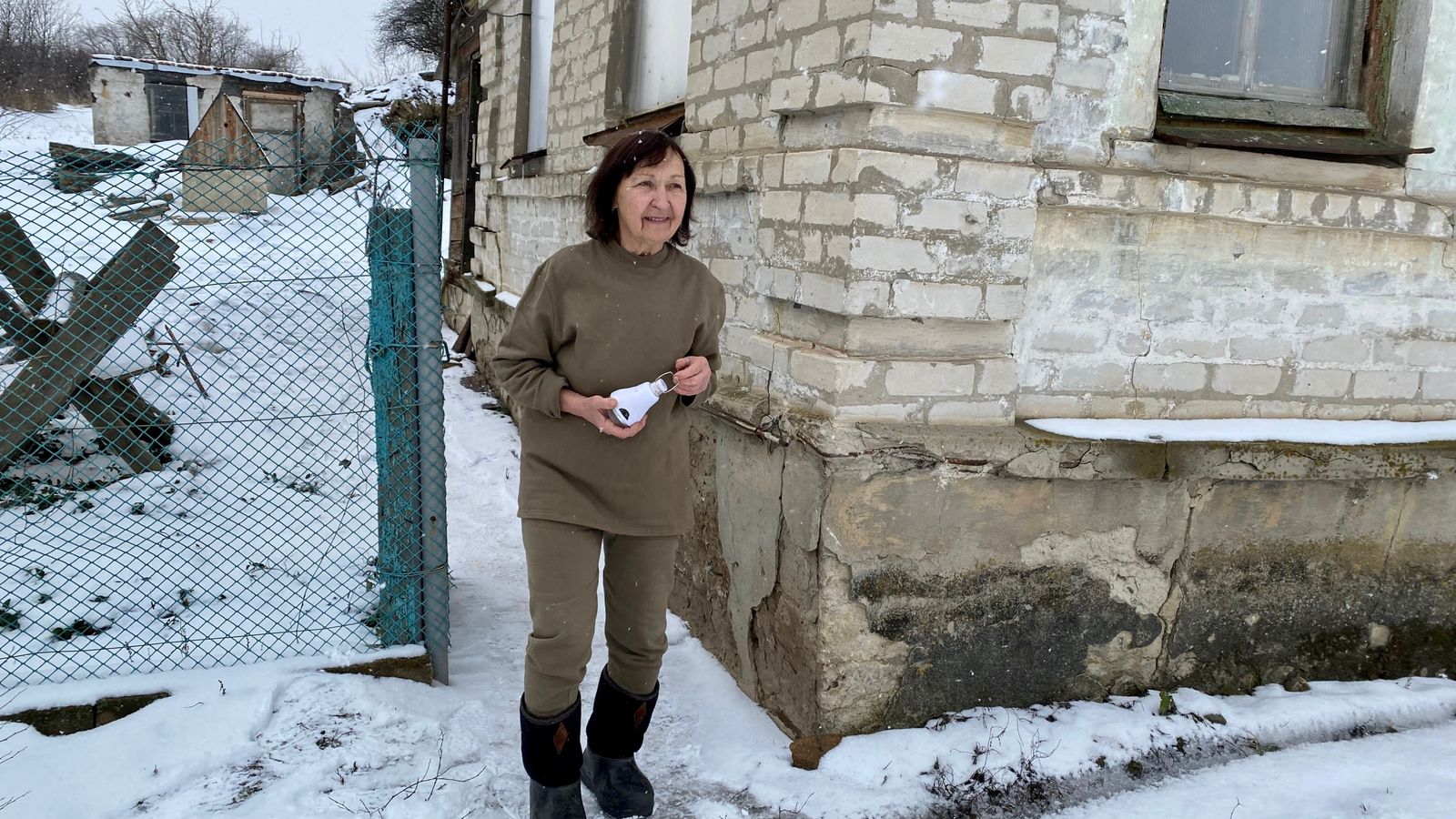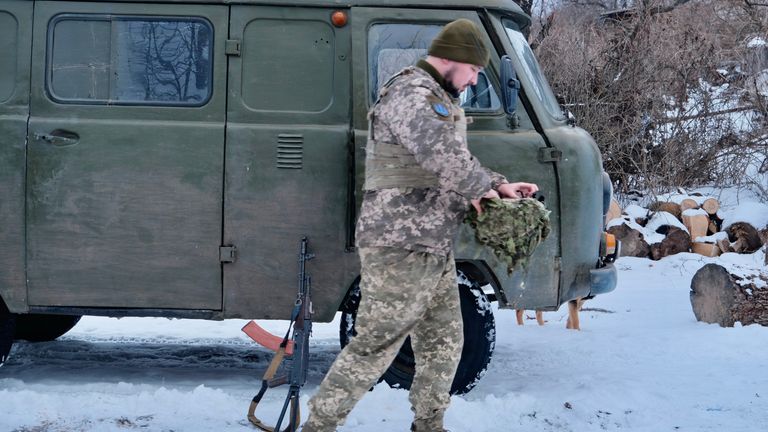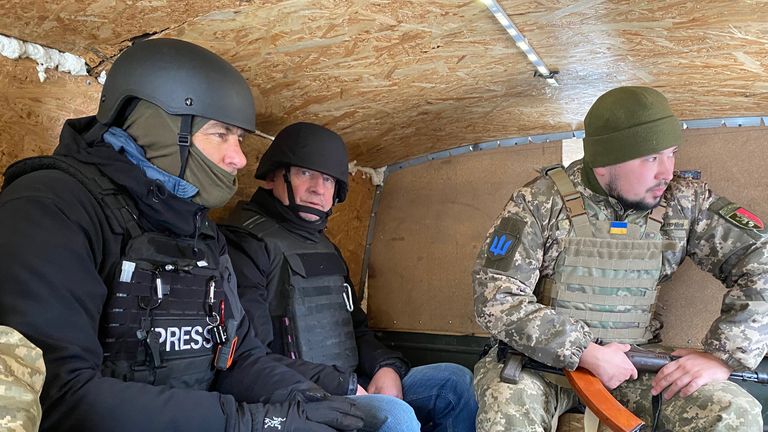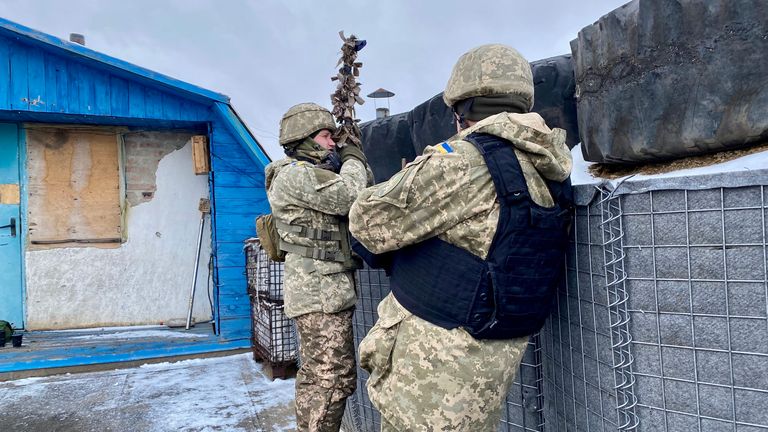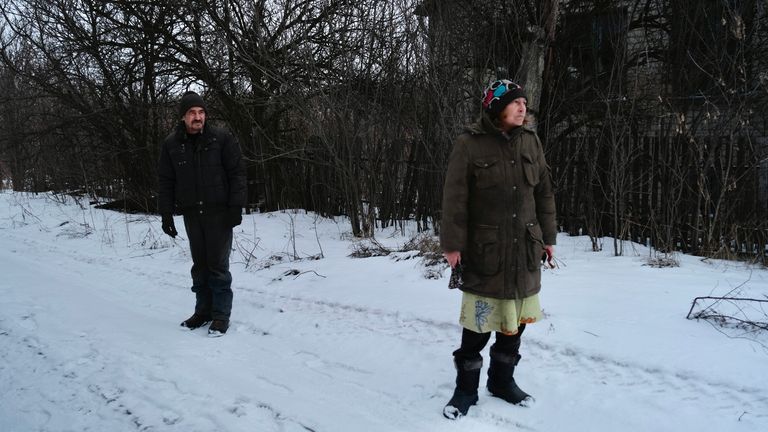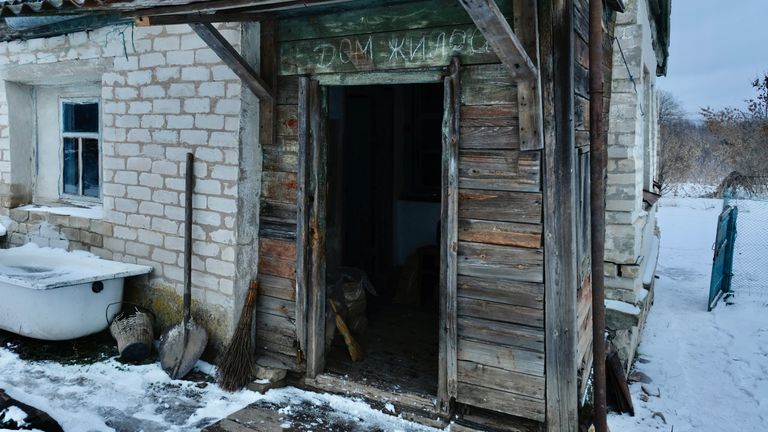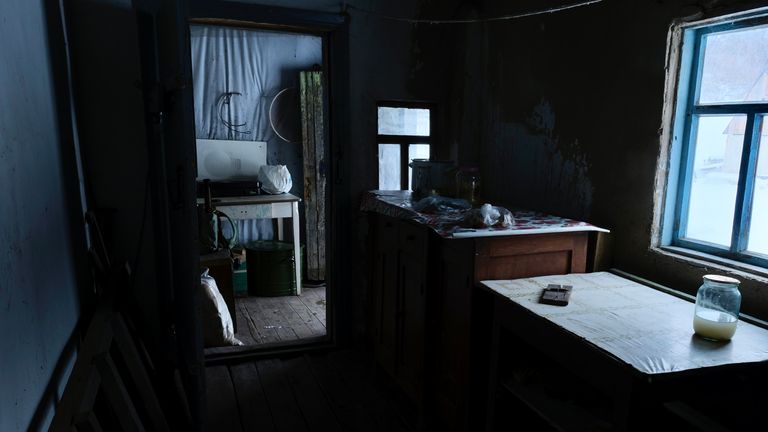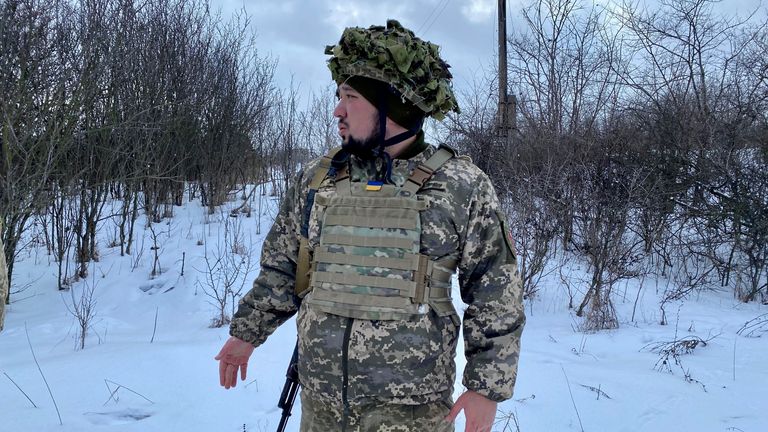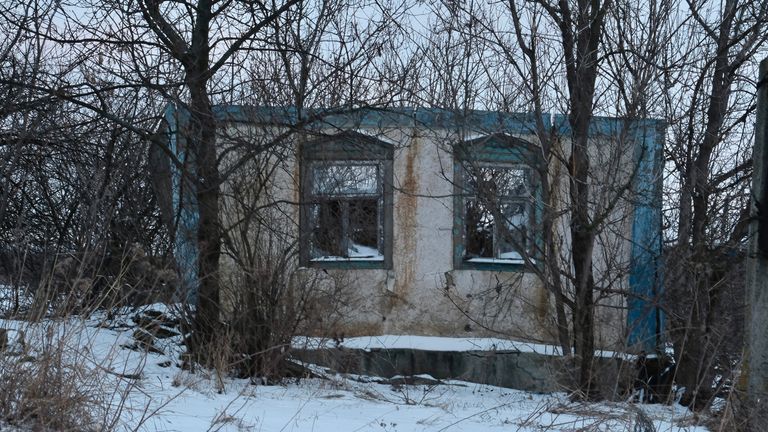A battered army ambulance pulls up in the freezing, snowy yard of a long-since abandoned factory in eastern Ukraine that is now the headquarters of the army’s 24th battalion.
The Soviet-era vehicle has been converted into a troop carrier; I say converted, in fact I mean everything has been torn out, plywood lines its interior walls and benches have been placed inside to sit on.
Four fairly jolly Ukrainian soldiers, and four of us, squeeze inside the back. Everyone is wearing body armour so it’s a tight fit.
The suspension groans as the driver guns the engine and we speed out into the snow-covered countryside – and the frontlines of the war between Ukraine’s military and Russian-backed separatist rebels.
While the world waits to see if Russia is actually going to join the conflict and invade Ukraine with its highly sophisticated and generously armed and equipped army, I was waiting to see if this dilapidated machine would actually make the 10 miles to the front.
As my mind wandered back to a possible Russian invasion, I looked at the soldiers crammed into a van that was barely roadworthy and felt sorry for them.
Their unit, equipped as it is, probably wouldn’t last the first contact.
I peered through a gap in the plywood into the front cab and beyond into the icy wastelands of the battlefield.
We passed through heavily mined farmlands, passing red signs warning of the danger of stepping or driving off the road.
The driver slowed briefly then shot forward as fast as he could on the slippery surface.
“The enemy position is all along this side”, one of the soldiers told us, pointing to the right side.
“They shoot at vehicles along here, so the driver goes quickly,” he said, and then laughed.
The soldiers were taking us to a village we had heard about but needed special permission to visit.
Novoaleksandrovka is closed to the outside world. It’s in the no-man’s land of the demarcation line that separates the two sides.
Once home to 200 people, only 11 remain. The fighting here is intense and has been for the eight years this conflict has raged.
We wanted to meet the residents, find out what it’s like living on the frontline, and basically find out why on earth they have stayed, and what they will do if indeed the Russians do invade.
We bumped our way to our stopping point: a couple of decrepit looking houses with a few soldiers standing outside.
We emerged into a snowstorm and looked out across the rest of the village. A collection of badly damaged and largely abandoned single-storey houses, covered in snow and ice.
The soldiers indicated we should follow them, and we went off to find some of the inhabitants.
The eerie quiet of an almost completely abandoned former community was broken by the thud of explosions and the rat-tat-tat of machine gun fire.
It was nearby, but not so near that we needed to take cover.
It’s often like this in warzones, you can hear the fighting, but you can’t see it. Sometimes, like now, when it’s windy and snowy, you can’t even tell what direction it’s coming from. It’s unsettling, it’s disconcerting, and it’s actually quite scary.
There is nothing in this town apart from the damaged houses: no shops, no electricity, no running water, even the community’s only medical clinic has been destroyed.
The soldiers explained that most of the people who have stayed behind rarely leave their homes, particularly in the bitterly cold winters of this country, but mainly because of the fighting. They say the residents are “hostages” of the situation.
A number of the doors we knocked on, in clearly occupied houses, simply weren’t answered. Our local producer said he had been warned that people would be very suspicious of our presence, and too scared to talk.
But Halyna, a spritely 73-year-old who lives by herself, was more than happy to welcome us inside. Above her front door, she has written in chalk “Domestic Residence”. It’s a message for soldiers and separatists alike, that her home is not abandoned.
She showed me how all her windows were smashed by bombs during the worst fighting. She said at times it was so bad that she lay next to her brick oven for protection, clutching her important documents and prepared to run if she has to.
There’s no electricity, no shops or medical services, but she’s got nowhere to go. More importantly, she doesn’t want to go. Halyna is repairing her home – the windows first, and then the damaged ceiling.
“I’m used to it here. I feel good. There are few of us left here, but people are still here. Well, I like it here”, she explained.
“I have everything in the garden, I plant, I work. The only thing is that I have to walk far distances because there is no transport.”
Halyna doesn’t believe Russia will invade, but said that if they do, she plans to stay, because she doesn’t think they’d be interested in harming her.
The army point out it really is too dangerous for anyone to stay here. But they won’t force them to leave.
From overwatch positions on the roofs of houses in the village, the soldiers keep a continuous eye on the separatist positions 100 or so metres away.
Lieutenant Viktor Bieliekov, a senior officer in the 24th battalion, reflected the views of many soldiers we have met on this trip, and previous ones here.
They say they’ve been at war for eight years anyway, and rarely, if ever, discuss a Russian invasion – although they accept it could happen.
“There is always a risk that there will be some kind of attack from the enemy. That’s why we’re here. It is likely, the probability exists.”
